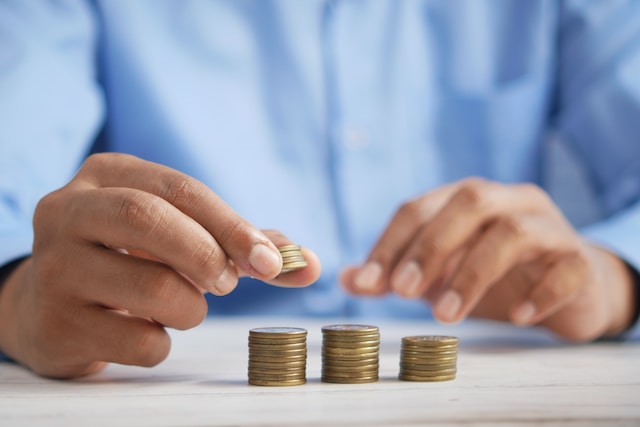Life is full of unexpected events, and having a financial safety net is essential for weathering these storms. An emergency fund serves as a crucial financial cushion, providing peace of mind and stability during unforeseen circumstances. In this blog post, we will explore the importance of building an emergency fund and provide practical steps to get started. By prioritizing and consistently contributing to your emergency fund, you can safeguard yourself against financial setbacks and gain greater control over your financial well-being.
The Importance of an Emergency Fund
An emergency fund is a dedicated pool of savings specifically reserved for unforeseen expenses, such as medical emergencies, job loss, car repairs, or unexpected home repairs. It serves as a financial safety net, providing immediate access to funds when you need them the most. An emergency fund offers a sense of security and prevents you from relying on high-interest credit cards or loans during challenging times.
Determine Your Emergency Fund Goal
Before you start building your emergency fund, it’s important to determine your target amount. Aim to save three to six months’ worth of living expenses. Consider your monthly bills, rent or mortgage payments, utilities, groceries, transportation costs, and any other essential expenses. Calculate the total and set that as your initial goal. Adjust the target amount based on your personal circumstances and risk tolerance.
Make Building an Emergency Fund a Priority
Building an emergency fund should be a top priority in your financial journey. Treat it as a monthly expense and allocate a portion of your income towards your fund. Automate your savings by setting up automatic transfers from your checking account to a separate savings account specifically designated for emergencies. Consistency is key, even if you can only save a small amount initially.
Cut Expenses and Increase Savings
To accelerate your emergency fund growth, evaluate your monthly expenses and identify areas where you can cut back. Trim unnecessary subscriptions, dine out less frequently, reduce entertainment expenses, and find creative ways to save on everyday purchases. Redirect the money saved towards your emergency fund. Additionally, consider increasing your income through side hustles or freelance work to boost your savings rate.
Set Realistic Milestones
Building an emergency fund is a journey, and it’s important to set realistic milestones along the way. Break down your savings goal into manageable chunks. Celebrate each milestone achieved to stay motivated. For example, aim to save 10% of your target amount within the first three months, 25% within six months, and so on. Having specific targets makes the process more attainable and encourages you to keep pushing forward.
Protect Your Emergency Fund
An emergency fund is meant for unexpected expenses, so it’s crucial to protect it from everyday spending temptations. Keep your emergency fund separate from your regular checking account and avoid mixing it with other savings goals. Consider keeping it in a high-yield savings account that offers competitive interest rates while still providing easy access to the funds when needed.
Replenish the Fund after an Emergency
When you tap into your emergency fund, make replenishing it a priority. After using the funds for an unexpected expense, adjust your budget and increase your savings rate temporarily to rebuild your emergency fund. Aim to replenish the amount withdrawn as soon as possible to maintain the safety net.
Evaluate Insurance Coverage
Having the right insurance coverage can protect your emergency fund from being completely drained during unexpected events. Review your health insurance, auto insurance, home insurance, and other relevant policies to ensure you have adequate coverage. By mitigating potential risks, you reduce the financial burden on your emergency fund.
Be Prepared for Emergencies
In addition to building an emergency fund, take proactive steps to be prepared for emergencies. Keep an updated list of emergency contacts, important documents, and account information in a secure place. Create an emergency budget and have a plan in place for managing financial crises. Being prepared can help alleviate stress and ensure a smoother recovery during difficult times.
Adjust and Reassess Regularly
As your financial situation evolves, it’s essential to adjust and reassess your emergency fund regularly. Life events such as marriage, children, or career changes may require an increase in your emergency fund target. Revisit your goals periodically and make adjustments as needed to ensure your fund remains aligned with your current circumstances.
The Bottom Line
Building an emergency fund is a critical step towards financial stability and peace of mind. By recognizing the importance of having a financial safety net, setting clear goals, making it a priority, cutting expenses, setting milestones, protecting the fund, replenishing after emergencies, evaluating insurance coverage, being prepared, and adjusting regularly, you can successfully build an emergency fund. Start small, be consistent, and watch your emergency fund grow over time, providing you with the security and confidence to handle unexpected situations and maintain financial resilience.
Are you ready to level up your financial game? At Grid, our single, powerful mission is to help Americans reach their financial goals. Whether you’re determined to boost your credit score, unlock the benefits of a cash-back credit card, or secure a personal loan, our simple and intuitive app is your ultimate ally. Download the app today and embrace financial empowerment!





